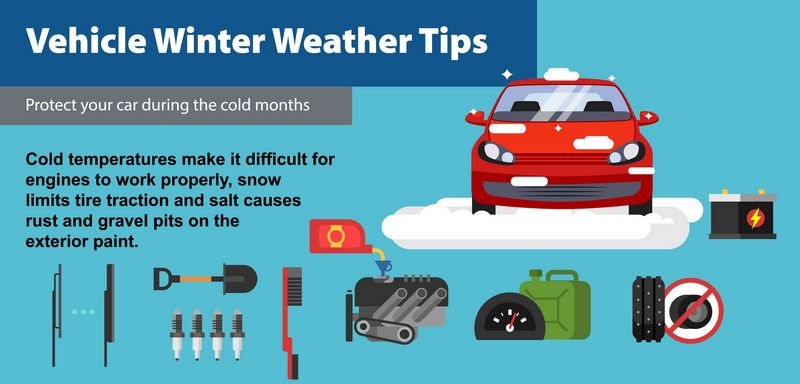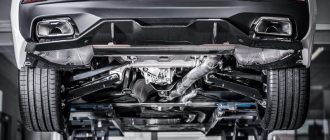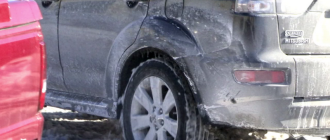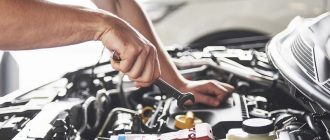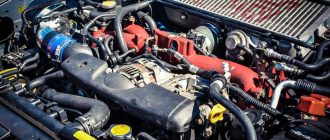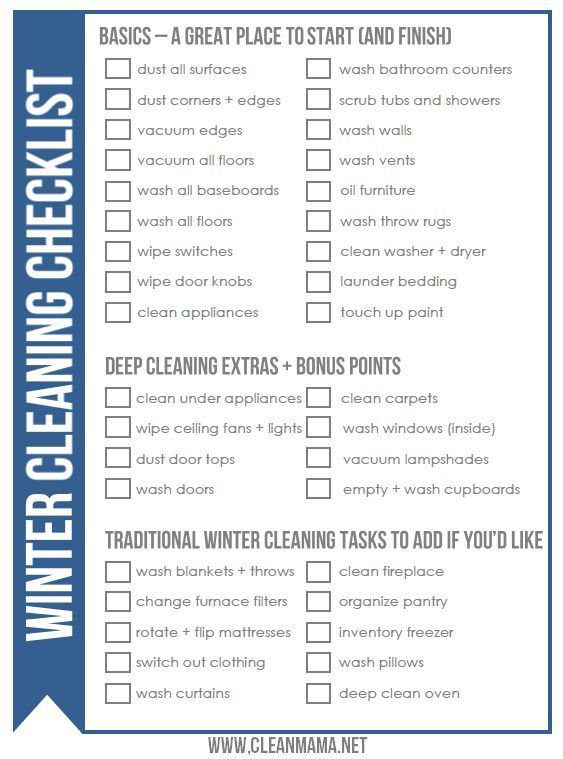
The Ultimate Checklist for Winterizing Your Car
Winter can be tough on your car, but taking the time to properly prepare your vehicle for the cold weather can help prevent costly repairs and keep you safe on the road. Whether you’re dealing with snow, ice, or freezing temperatures, following a winterizing checklist is essential for ensuring your car is ready for the season.
First and foremost, it’s important to check your tires. Winter tires are designed to provide better traction on slippery roads, so investing in a set of snow tires can make a huge difference in your car’s performance. Additionally, make sure your tires are properly inflated and have sufficient tread depth to grip the road.
Next on the checklist is checking your battery. Cold weather can take a toll on your car’s battery, so ensure that it’s clean and fully charged. Consider having your battery tested to determine its health and replace it if necessary. It’s also a good idea to keep jumper cables in your car in case of an emergency.
Another important step in winterizing your car is checking the antifreeze and coolant levels. These fluids prevent your engine from freezing, so make sure they’re at the appropriate levels and that there are no leaks in the system. Additionally, consider having your radiator flushed and filled if it hasn’t been done in a while.
Lastly, don’t forget about your windshield wipers and fluid. Visibility is crucial during winter driving, so make sure your wiper blades are in good condition and replace them if needed. Also, use a windshield washer fluid that’s rated for freezing temperatures to ensure it doesn’t freeze on your windshield.
By following this ultimate checklist for winterizing your car, you can ensure that your vehicle is ready to tackle the challenges of the cold weather. Taking the time to prepare your car now can save you from unexpected breakdowns and help keep you safe on winter roads. So, don’t wait until it’s too late – start winterizing your car today!
Inspect Your Tires
As part of the ultimate winterizing checklist for your car, it is important to inspect your tires. Your tires play a crucial role in keeping you safe on the roads during winter weather conditions.
Start by checking the tread depth of your tires. The tread provides traction and helps prevent your vehicle from sliding on icy or snowy roads. If your tires have less than 1/8 inch of tread remaining, it’s time to replace them.
Next, examine the tire pressure. Cold weather can cause the air pressure in your tires to decrease, which can lead to decreased handling and increased fuel consumption. Use a tire pressure gauge to ensure that each tire is properly inflated according to the manufacturer’s recommendations.
While inspecting your tires, also check for any signs of damage or wear, such as cuts, bulges, or uneven wear patterns. These issues can indicate a need for tire repair or replacement.
Don’t forget to inspect your spare tire as well. It’s important for your spare tire to be in good condition and properly inflated in case you encounter a flat tire during winter driving.
By thoroughly inspecting your tires and addressing any issues, you can ensure that your car is ready to handle the challenges of winter weather. This will help improve traction, handling, and overall safety on the road.
Remember: Proper tire maintenance is essential for winter driving. Don’t neglect this important step in winterizing your car!
Check Your Battery
Winter can be tough on car batteries, as they have to work harder in colder temperatures. Before the ultimate cold weather hits, it’s essential to check your car battery to ensure it’s in good condition.
Start by visually inspecting the battery for any signs of damage, such as leaks or corrosion. If you notice any issues, it’s recommended to have your battery tested or replaced.
Next, check the battery’s voltage using a multimeter. The voltage should be around 12.6 volts when the engine is off. If the reading is significantly lower, it may indicate a weak battery that needs to be charged or replaced.
Additionally, check the battery’s terminals for tightness. Loose terminals can prevent the battery from charging properly and cause starting issues. Use a wrench to tighten any loose connections.
Finally, consider having your battery tested by a professional if it’s older than three years. Cold weather can decrease a battery’s capacity, and an older battery may struggle to start the car in subzero temperatures.
By checking your battery before winter arrives, you can ensure your car starts reliably even in the harshest conditions. Remember, a healthy battery is essential for a hassle-free winter driving experience.
Test Your Lights
As part of your ultimate winterizing checklist for your car, it is important to test your lights and ensure they are all working properly. With shorter daylight hours and potentially hazardous weather conditions, it is crucial that your lights are in good working order to maximize visibility on the road.
Start by checking your headlights, both low beam and high beam, to make sure they are shining brightly and illuminating the road ahead. A dim or flickering headlight can significantly impair your ability to see and be seen by other drivers.
Next, check your taillights, brake lights, and turn signals. These lights are essential for your vehicle’s visibility from behind and indicate your intentions to other drivers. Replace any burnt-out or broken bulbs promptly.
Don’t forget about your fog lights and hazard lights. Fog lights are particularly important during winter months when visibility can be limited due to fog, snow, or heavy rain. Make sure they are clean and working properly. Hazard lights are useful in emergency situations and can alert other drivers to your presence if your vehicle is stopped or disabled.
Finally, don’t overlook your interior lights, such as your dome light or map lights. These lights are crucial for your own visibility inside the car, especially during nighttime driving.
Testing and ensuring the functionality of your lights should be a top priority in your winterizing checklist. It not only helps you see better on the road but also increases your safety and the safety of others. So, take the time to inspect and replace any faulty lights before the cold weather hits.
Replace Worn Windshield Wipers
As part of the ultimate winterizing checklist for your car, don’t forget to replace worn windshield wipers. Cold weather can make your wipers less effective, which can impair visibility and make driving dangerous. It’s important to have clear vision on the road during winter conditions.
Inspect your windshield wipers for any signs of wear and tear, such as cracked rubber or frayed edges. If you notice any damage, it’s time to replace them. Even if they appear to be in good condition, it’s generally recommended to replace your wipers every six to twelve months for optimal performance.
When choosing new windshield wipers, make sure they are specifically designed for winter weather. Look for wipers with a sturdy frame and a rubber blade that can withstand freezing temperatures. Some wipers even come with a special coating that prevents ice and snow build-up.
| 1. Lift the wiper arm away from the windshield. |
| 2. Press the small tab or button on the wiper blade to release it from the arm. |
| 3. Slide the old wiper blade off the arm. |
| 4. Attach the new wiper blade by sliding it onto the arm until it clicks into place. |
| 5. Lower the wiper arm back onto the windshield. |
| 6. Repeat the process for the other wiper blade. |
Replacing worn windshield wipers is a simple and affordable way to ensure your safety on the road during winter. Don’t overlook this important step in winterizing your car and preparing it for the cold weather ahead.
Check Your Coolant and Antifreeze Levels
As part of the ultimate checklist for winterizing your car, it’s important to check your coolant and antifreeze levels before the cold weather arrives. Coolant is a mixture of water and ethylene glycol that helps regulate the temperature of your engine, while antifreeze helps prevent the coolant from freezing in low temperatures.
Start by checking the coolant level in the overflow tank. This is usually a transparent container located near the radiator. The coolant level should be between the “min” and “max” marks on the tank. If the level is low, add a mixture of 50% coolant and 50% distilled water to bring it up to the proper level.
Next, check the radiator itself. Make sure the engine is cool before removing the radiator cap. If the coolant level is low in the radiator, fill it up with the same mixture of coolant and water. Be careful not to remove the radiator cap when the engine is hot, as it can cause serious burns.
It’s also important to check the condition of your coolant and antifreeze. Over time, coolant can become contaminated and lose its effectiveness. Look for any signs of rust, dirt, or sediment in the coolant. If it appears dirty or discolored, it may be time to flush and replace the coolant.
Remember, proper levels of coolant and antifreeze are crucial for your car’s engine to maintain the correct temperature, especially in cold weather. So, don’t skip this step on your winterizing checklist!
Inspect Your Belts and Hoses
As part of the ultimate checklist for winterizing your car, it is important to inspect your belts and hoses. Cold weather can cause these components to become brittle and less flexible, which can lead to cracks, leaks, or even failure.
First, visually inspect the belts for any signs of wear or damage. Look for fraying, cracking, or glazing on the surface. If you notice any issues, it is recommended to replace the belt before winter hits.
Next, check the tension of the belts. They should have the correct amount of tension to ensure proper functioning. If they are too loose or too tight, you may experience problems such as slipping or excessive noise. Adjust the tension as necessary or consult a professional if you are unsure how to do it yourself.
After inspecting the belts, move on to the hoses. Start by checking for any visible leaks or cracks. Look for signs of wear around the connections as well. If you find any problems, it is best to replace the hose to prevent any future issues.
Additionally, squeeze the hoses to check for firmness. They should feel firm but not too hard or too soft. If they are excessively soft or hard, it may indicate a problem with the hose and it should be replaced.
In conclusion, inspecting your belts and hoses is an important step in winterizing your car. By identifying and addressing any issues now, you can prevent unnecessary breakdowns or damage during the cold winter months.
| Prevents breakdowns |
| Ensures proper functioning |
| Prevents leaks |
| Prolongs the lifespan of the belts and hoses |
Check Your Oil and Oil Filter
As part of the ultimate winterizing checklist for your car, it’s essential to check your oil and oil filter before the cold weather sets in. Cold temperatures can cause oil to thicken, making it harder for your engine to get the lubrication it needs.
Start by checking the oil level on the dipstick. If it’s low, top it up with the recommended oil for your vehicle. It’s also a good idea to replace your oil filter to ensure maximum engine performance.
Remember that different oils have different viscosity ratings, so choose one that’s suitable for winter weather. Look for an oil with a low viscosity rating, as it will flow more easily in cold temperatures. You may want to consult your owner’s manual or a trusted mechanic to determine the best oil for your vehicle.
Regularly checking your oil and oil filter throughout the winter months will help keep your engine running smoothly and prevent any cold weather-related issues.
Test Your Heater and Defroster
As winter approaches, it’s essential to ensure that your car’s heater and defroster are working properly. These features are crucial for keeping you warm and maintaining good visibility while driving in cold weather.
Start by turning on your car’s heater and setting it to the highest temperature. Wait a few minutes for it to warm up and make sure hot air is blowing out of the vents. If there’s no heat or it takes a long time to warm up, there may be an issue with the heating system that needs to be addressed.
Next, test your car’s defroster. Turn it on and set it to the highest fan speed. Make sure it’s blowing air onto the windshield and side windows. If the defroster is not working or if the airflow is weak, it could be due to a faulty blower motor or a clogged air filter.
Additionally, check the condition of your car’s cabin air filter. A clogged or dirty filter can restrict airflow and hinder the effectiveness of the heater and defroster. If necessary, replace the filter following the manufacturer’s recommendations.
Lastly, don’t forget to check the rear window defroster. Turn it on and ensure that the lines on the rear window start heating up. If they don’t, there may be a problem with the defroster grid that needs to be addressed.
By checking and ensuring the functionality of your car’s heater and defroster, you can have a comfortable and safe driving experience during the winter season.
Remember: your safety on the road should always be a top priority, so address any issues with your car’s heater and defroster before the cold weather sets in.
Check Your Brakes
As part of the winterizing checklist for your car, it is crucial to check your brakes. With the colder weather, icy roads, and reduced visibility, it is important to ensure that your brakes are in optimal condition. Here are some steps to follow:
- Inspect your brake pads: Check for any signs of wear and tear. If they are less than 3mm thick, consider replacing them.
- Check brake fluid levels: The cold temperatures can affect the brake fluid, so make sure it’s at the right level. If it’s low, top it up.
- Test your brakes: Find an empty, safe space and test your brakes. Listen for any unusual noises or vibrations. If something doesn’t feel right, have them checked by a professional.
- Look for signs of brake rust: Examine the brake rotors or drums for signs of rust. Rust can affect the braking performance, so consider cleaning or replacing them if necessary.
- Have your brake system inspected: Consider taking your car to a qualified mechanic for a thorough brake system inspection. They can check the brake lines, calipers, and other components to ensure everything is working properly.
By checking your brakes as part of your winterizing checklist, you can help ensure your car is prepared for the cold weather conditions. Taking the time to maintain your brakes can help keep you safe on the road during the winter season.
Replace or Top Up Your Washer Fluid
One of the most important steps in the ultimate checklist for winterizing your car is to replace or top up your washer fluid. It is essential to ensure that your washer fluid reservoir is filled with the appropriate fluid for the colder temperatures.
During winter, road conditions can be challenging, with snow, ice, and salt accumulating on your car’s windshield. Having enough washer fluid is crucial for maintaining clear visibility while driving. It helps remove dirt, grime, and ice from your windshield, ensuring a safe and unobstructed view of the road.
When replacing or topping up your washer fluid, make sure to choose a formula that is specifically designed for winter use. These formulas contain additives that prevent the fluid from freezing in low temperatures. They also help to dissolve ice and snow on your windshield more effectively.
To ensure that the washer fluid is at the correct level, locate the reservoir under the hood of your car. It is usually transparent, allowing you to easily see the fluid level. If it is low, use a funnel to pour the washer fluid into the reservoir until it reaches the recommended level.
Additionally, it is a good idea to keep an extra bottle of washer fluid in your trunk in case you run out while on the road. Being prepared with enough washer fluid will save you from potential problems and ensure a safer driving experience during the winter months.
| Improved visibility |
| Safer driving |
| Efficient removal of dirt, grime, and ice |
| Prevention of freezing in low temperatures |
Inspect Your Exhaust System
As you go through your ultimate winterizing checklist for your car, don’t forget to inspect your exhaust system. Cold weather can put extra stress on your car’s exhaust system, so it’s important to make sure everything is in working order.
Start by visually inspecting your exhaust system for any signs of damage, such as rust or cracks. Pay close attention to the muffler, pipes, and connections. If you notice any issues, consider taking your car to a mechanic for further inspection and repairs.
In addition to a visual inspection, it’s also a good idea to listen for any unusual noises coming from your exhaust system. A loud rumbling or hissing sound could indicate a problem, such as a leak. If you hear anything out of the ordinary, seek professional help to diagnose and fix the issue.
Another important aspect of inspecting your exhaust system is checking for carbon monoxide leaks. This toxic gas can be deadly, so it’s crucial to ensure that it’s not entering your car’s cabin. Carbon monoxide leaks can occur if there are cracks or gaps in the exhaust system, so it’s important to fix any issues immediately.
To check for carbon monoxide leaks, start by closing all windows and doors of your car. Then, start the engine and let it idle for a few minutes. Next, turn on the heater and defroster, and make sure all air vents are closed. Finally, use a carbon monoxide detector to check for any traces of gas inside the car. If the detector sounds an alarm, exit the vehicle immediately and seek professional help.
In conclusion, don’t overlook the importance of inspecting your exhaust system when winterizing your car. This simple step can help ensure that your car is safe and ready to withstand the cold weather. Make sure to visually inspect for any damage, listen for unusual noises, and check for carbon monoxide leaks. By taking these precautions, you can have peace of mind and a well-prepared car for the winter months.
Prepare an Emergency Kit
When winterizing your car, it’s essential to prepare an emergency kit for any unexpected situations on the road. This kit should include items that will help you stay safe and warm until help arrives.
Here are some must-have items for your ultimate car emergency kit:
1. Warm blankets or sleeping bags: These will provide insulation and help keep you warm if you are stranded in cold weather.
2. Flashlights and extra batteries: In case you find yourself stuck on the road at night, having a reliable flashlight is crucial. Make sure to pack extra batteries as well.
3. Reflective warning triangles or flares: These will alert other drivers to your presence and help prevent accidents.
4. Jumper cables: Dead batteries are a common problem in winter, so having jumper cables can save you from being stranded.
5. First aid kit: In case of any injuries, having a well-stocked first aid kit can provide immediate assistance until professional help arrives.
6. Non-perishable snacks and water: If you’re stranded for an extended period, having food and water will help keep you nourished and hydrated.
7. Ice scraper and snow brush: Clearing snow and ice from your car’s windshield and windows is crucial for visibility.
8. Portable phone charger: Having a fully charged phone can be a lifesaver in case of an emergency. A portable charger ensures that you can stay connected even if your car’s battery dies.
Remember, it’s important to periodically check and restock your emergency kit to ensure that it is always up to date and ready for use. Hopefully, you won’t need to use it, but being prepared can make all the difference in an emergency situation.
Consider Installing Winter Tires
As part of your winterizing checklist for the ultimate car care, it is essential to consider installing winter tires. These specialized tires are designed to provide optimal performance and safety in cold weather conditions.
Winter tires offer several advantages over all-season or summer tires. They are made of a special rubber compound that remains flexible even in extremely low temperatures. This flexibility allows the tires to maintain a better grip on icy or snowy roads, reducing the risk of skidding or sliding.
In addition to the special rubber compound, winter tires also feature a unique tread pattern. The tread blocks have deeper grooves and more biting edges, which provide better traction on slippery surfaces. This design helps the tires effectively push away slush, snow, and water, improving grip and preventing hydroplaning.
Moreover, winter tires are designed to enhance braking performance in cold weather. The increased grip and traction help shorten the braking distance, allowing you to stop safely in icy or snowy conditions. This feature can be crucial in avoiding accidents on slippery roads.
It is important to note that winter tires are not only beneficial in heavy snowfall areas. Even if you live in a region with mild winters, temperatures below 45°F (7°C) can significantly affect tire performance. Therefore, it is advisable to switch to winter tires when the temperature drops.
When selecting winter tires, make sure to choose ones that are appropriate for your car’s make and model. Consult your car’s manufacturer or a trusted tire dealer to determine the correct tire size, load index, and speed rating for your vehicle.
By installing winter tires, you can enhance your car’s handling, stability, and safety during the cold winter months. Don’t forget to include this important step in your winterizing checklist to ensure a smooth and secure driving experience.
Question-answer:
How often should I change my car’s antifreeze?
You should change your car’s antifreeze every two years or as recommended by the manufacturer.
What type of tires should I use in the winter?
You should use winter or snow tires for better traction and handling in icy and snowy conditions.
Do I need to check my battery before winter?
Yes, it’s important to check your car battery before winter as cold weather can reduce its power output.
Should I always keep a snow shovel in my car during winter?
It’s a good idea to keep a snow shovel in your car during winter in case you need to dig your car out of snow or clear the snow around it.
Can I use water instead of windshield washer fluid in winter?
No, you should not use water instead of windshield washer fluid in winter as it can freeze and damage the washer system.
Why is it important to winterize your car?
Winterizing your car is important to ensure that it is prepared for the cold weather. This includes checking and preparing all the necessary components of your vehicle to ensure its reliability and safety during winter months.
